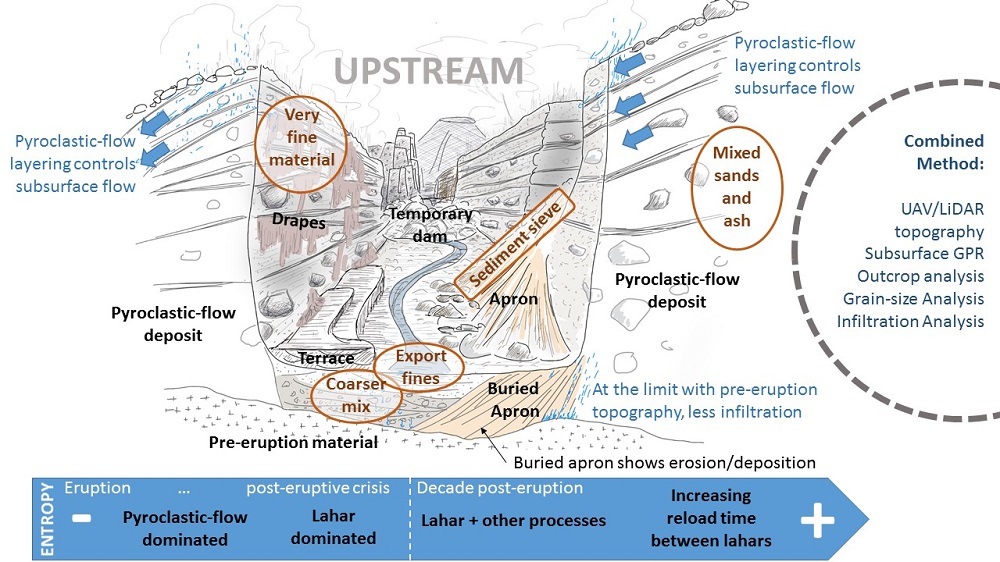In the aftermath of pyroclastic-flow –dominated eruptions, lahars are the main geomorphic agent, but at the decadal scale, different sets of processes take place in the volcanic sediment cascade. At Unzen Volcano, in the Gokurakudani Gully we investigated the geomorphologic evolution and how the topographic change and the sediment change over time is controlling this transition. For this purpose, a combination of LiDAR data, aerial photography and photogrammetry, Ground Penetrating Radar and sediment grain-size analysis was done. The results show chocking zones and zones of enlargement of the gully, partly controlled by pre-eruption topography, but also by the overlapping patterns of the pyroclastic flow deposits of 1990 – 1995. The Ground Penetrating Radar revealed that on top of the typical lahar structure at the bottom of the gully, side-wall collapses were trapping finer sandy sediments formed in relatively low-energy deposition environment. This shows that secondary processes are taking place in the sediment transport process, on top of lahar activity, but also that these temporary dams may be a source of sudden sediment and water release, leading to lahars. Finally, the sediments from the gully walls are being preferentially oozed out of the pyroclastic-flow deposit, meaning that over longer period of time, there may be a lack of fines, increasing permeability and reducing internal pore-pressure needed for lahar triggering. It also poses the important question of how much of a past-event one can understand from outcrops in coarse heterometric material, as the deposit structure can remain, even after loosing part of its fine material.

